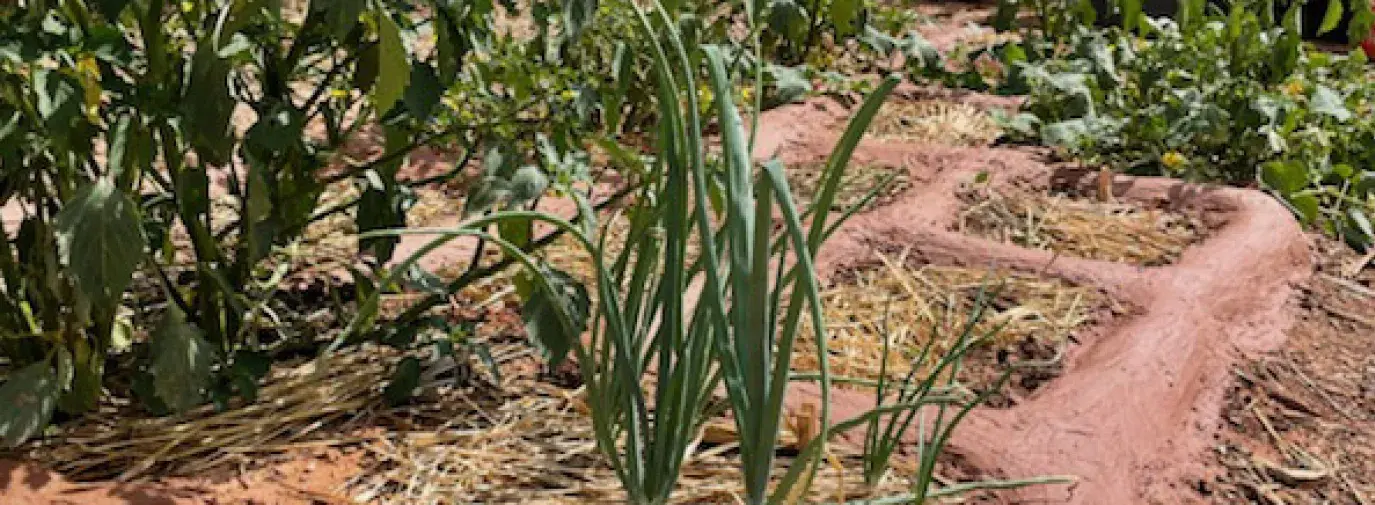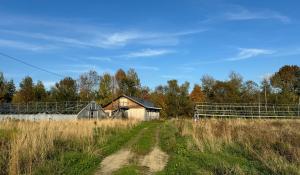
Industrial agriculture has changed our relationship with the land—instead of picking a tomato by hand, many Americans pick it out of a lineup on the grocery shelf. But cultivating the land is a fundamental practice of humanity, stretching back millennia. Many traditional gardening methods from around the world maintained a natural balance between the soil, the climate, and community food needs, in their own unique ways. The modern regenerative gardening/agriculture movement is informed by these ancient and ongoing traditions—and it’s helping people understand that we are part of maintaining the balance of the natural world as stewards of the land.
Shepherds of the Land
In Ortonville, Michigan, Tamarack Camps is helping Jewish children connect with their roots and the joys of tending the land. Farber Farm is an educational program at Tamarack Camps, where campers may grow and harvest peppers, kale, beans, broccoli, zucchini, and much more—the produce is served in the cafeteria, so the campers can experience the food from seed to table.
Alex Rosenberg, the Farber Farm manager, explains that while cultivating the land is not something typically associated with Judaism today, it is a foundational part of the religion.
“Our ancestors were shepherds of the land. All our holidays are woven into an agricultural calendar,” she says. “Just being on the farm and getting your hands in the soil is the absolute most Jewish thing you can do.”

One of the oldest Jewish traditions, shmita, is about nurturing natural balance—every seven years, cultivated land is to be left alone to rewild. As many ancient Jews were animal shepherds, this process protects the land from overgrazing. The belief is that, if the land is allowed to rest, then the following years will be bountiful. It’s a reflection of the seven-day week with one day of rest.
During the most recent shmita, which occurred from September 2021 to September 2022, Rosenberg hoped to inspire the campers to think bigger than just their summer camp experience.
“How do we bring [shmita] forward into soil conservation practices that we can be doing year after year after year, rather than taking just a sabbatical?” Rosenberg asked. “How do we extend that and still be able to work within an agricultural framework where we are producing enough food in efficient ways to feed our communities?”
It’s food for thought that the regenerative movement is already working on. Shmita, interpreted for modern day farming, is rotational grazing—where animals are kept together to graze a short time and then moved to new fields, leaving the field where they grazed and fertilized to rest, for the diverse grass species to grow to support soil health, and sequester carbon.
For Farber Farm, the idea of shmita is a tool to teach campers about stewarding the land. The land requires rest and restoration much like humans do. It’s part of a curriculum that includes regenerative growing practices using methods like no till, cover crops, and composting to improve soil health. The lesson is that, with patience, nurturing the well-being of the land means caring for ourselves.
It’s also a lesson central to the Zuni tribe of the American southwest.
Bounty in Scarcity
Indigenous communities across the Americas have rich agricultural histories with holistic ecosystem management, many of which have informed the modern understanding of regenerative growing practices.
Venturing into the dry and hot environment of New Mexico, the Zuni tribe has practiced waffle gardening (heko:we in the Zuni language) in the desert for centuries. From above, the ground looks like a waffle, with little depressions in the soil to hold water for plants. A waffle garden can be sustained with limited water resources, making it extremely efficient in arid environments. This mindfulness towards limited resources is central to regenerative growing practices, which is conscious of waste.
Culturally, food sovereignty (the belief that people have the right to determine what and how they grow and eat) is woven into the Zuni way of life. As expert desert farmers, the Zuni people would grow food like maize, squash, and beans, historically. But in 1908, the Zuni River—what sustained gardens in the Zuni pueblo (village)—was dammed to form the Black Rock Reservoir. Since then, grocery stores proliferated, and gardening became scarce.

Kenzi Bowekaty is the food sovereignty leader at Zuni Youth Enrichment Project (ZYEP) in Zuni, New Mexico, a nonprofit dedicated to connecting Zuni children and families with their traditions. Bowekaty says that during the pandemic, waffle gardens began to reappear.
“ZYEP decided to give out garden kits because we couldn’t continue our regular programming the way we would have,” says Bowekaty. “I feel like it’s really growing back again, because of people wanting their own food.”
Just as the waffle-shaped depressions in the ground are home for the plants, homes in the Zuni pueblo are parsed out in a grid. That reflection is just one of many for the Zuni and the plants they nurture.
“We really believe that the plants resemble us as people in the stages of life,” Bowekaty adds. A planted seed is like an embryo in a mother’s womb, that eventually emerges in the sun. When harvest time comes, and the heavy corn stalks slump over, which Bowekaty relates to how a person would hunch as they aged.
Like how taking care of each other in a family builds a strong unit, taking care of our plant family results in food we can eat. When it comes to regenerative growing practices, the belief that humans are akin to plants keeps us mindful of how to treat and maintain the land.
Take Action
- Learn more about the cultural roots of regenerative growing in Native Growers Decolonize Regenerative Agriculture from the summer 2021 Green American.
- Read Healing Grounds by Liz Carlisle, which shares the stories of Indigenous, Black, Latinx, and Asian American farmers reviving traditional methods of growing food.
- Start your own regenerative garden! Visit our resources for Climate Victory Gardeners to get started.







